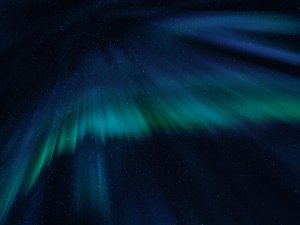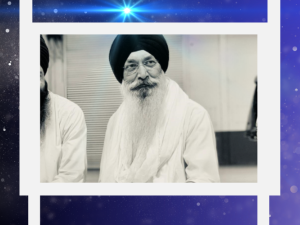Sound in the Process of Creation of Universe
Philosophy of Creation
Philosophy of Sikhism it based on Sri Guru Granth Sahib (SGGS) originally compiled by Sri Guru Arjan Dev and later given the status of Guru by Guru Gobind Singh after adding hymns of the Ninth Guru, Guru Tegh Bahadur. Japuji, Aasa di Vaar, Siddh Goshth and Maru Sohile of Guru Nanak and Sukhmani Sahib of Guru Arjan have descriptions about the origin and development of universe and life in detail. Other Gurus and saints have touched upon the subjects at random. Primary material here is obtained from the hymns of Guru Nanak and Guru Arjan. [1]
Only One Creator
According to Sri Guru Granth Sahib, the One and the only One God has created the entire universe. [2]
Situation before Creation
Before creation of the universe there was nothing around; whatever is observable in the universe did not exist earlier. [3] There was utter darkness all-around. [4] He had remained in darkness in deep meditation [5] for thirty six yugas. [6] He emerged from this darkness shoonya Himself and gave Himself a Name. [7]
Emergence of God with spread of Light
With His emergence spread the Light around. [8] The Light of the Lord spread everywhere. [9] When in light, the Lord probably felt lonely and thought of creating the universe as a play for Himself. [10]
Start of Creation with Sound on the base of Light
God created the universe with one sound [11]. From the sound millions of rivers (of atoms) flowed.[11]. All the segments and continents in the universe were created from one sound of His order alone. [12] Due to wave-particle duality of the Light and it its spread all over, the sound spread through particles all over. A research team led by Fabrizio Carbone at EPFL has now carried out an experiment with a clever twist: using electrons to image light. The researchers have captured, for the first time ever, a single snapshot of light behaving simultaneously as both a wave and a stream of particles.
In the experiment; A pulse of laser light is fired at a tiny metallic nanowire. The laser adds energy to the charged particles in the nanowire, causing them to vibrate. Light travels along this tiny wire in two possible directions, like cars on a highway. When waves traveling in opposite directions meet each other they form a new wave that looks like it is standing in place. Here, this standing wave becomes the source of light for the experiment, radiating around the nanowire. The scientists shot a stream of electrons close to the nanowire, using them to image the standing wave of light. As the electrons interacted with the confined light on the nanowire, they either sped up or slowed down. Using the ultrafast microscope to image the position where this change in speed occurred, Carbone's team could now visualize the standing wave, which acts as a fingerprint of the wave-nature of light. While this phenomenon shows the wave-like nature of light, it simultaneously demonstrated its particle aspect as well. As the electrons pass close to the standing wave of light, they "hit" the light's particles, the photons. As mentioned above, this affects their speed, making them move faster or slower. This change in speed appears as an exchange of energy "packets" (quanta) between electrons and photons. The very occurrence of these energy packets shows that the light on the nanowire behaves as a particle. [13]
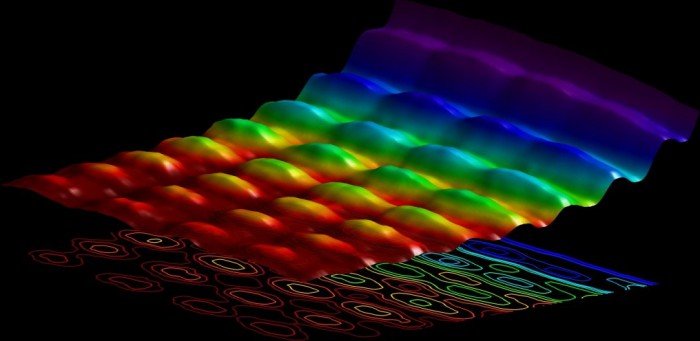 |
|
Photograph of light both as wave and particle  |
Quantum mechanics tells us that light can behave simultaneously as a particle or a wave [13]. The light energy being at the base and the sound energy being the activating force, the creation of universe was initiated.[14]
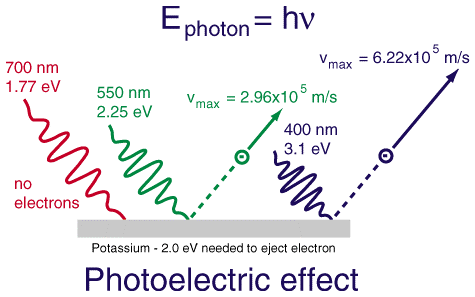
Sound waves are mechanical waves. Sound wave is created because the matter along the wave vibrates and this makes the wave propagate. The source of the matter is the dark matter, the central energy. Sound waves spread through the matter by causing lattice to vibrate causing harmonic (i.e., quadratic) interactions between atoms. Quantum mechanically, the energy changes in multiples of h v hv where v v is the frequency of the mode. Because the energy comes in lumps, all the same size, the lumps of energy are called 'a particle'. For a lattice, the particles are called phonons; for the em field the particles are called photons. All energy levels are equally spaced in a quantum harmonic oscillator. Field particles do not exist outside the quantum world; conversely, phonons in solids are as real as photons. Graphene said: "Sound is a pressure wave, where the particles in the air (the actual molecules o2, n2, etc) vibrate to create sound. These waves behave approximately as some kind of particle (known as quasi particles). The particular quasi particle that is associated with sound is known as a Phonon.
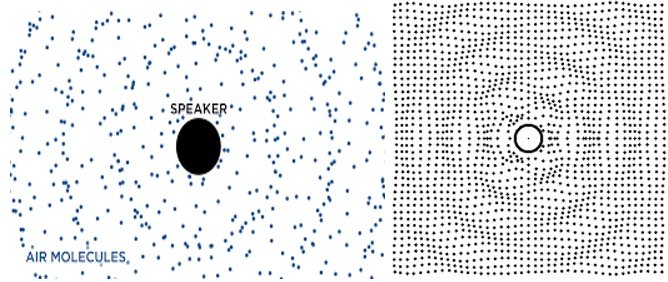
From the True God came the air and from air came the water. From water He created the universe and in every element of the universe He entered in the form of light. [15] He created the universe in many different methods in such a way that everything originates from the God and merges into it. [16] He created billions of stars, suns and planets.[17] He created billions of countries and earths [18] and on them He created water, land and mountains.[19] He mixed water, fire and air to create the living beings on earth.[20] The entire universe is made of water and water exists everywhere. [21] There are billions of universes, skies and Netherlands.[22] There are billions of places of worship. [23] The word is the place of residence of the God and He stays in it. 24] He creates and cares Himself. [25]
This sound is considered to be His Name (naam) or Sabd. [26] Everything is created from this sound Naam. [27] From this sound Naam all beings are created. All regions and worlds are created from Naam. All knowledge including simritis and Vedas are the creation from Naam. All hearing, knowledge and meditation is on the Naam. All skies and neither worlds are from Naam. All figures are created by Naam. Heavens and whatever is built is all from Naam. Hearing and meditation on Naam one gets emancipated. [28][29]
The universe originates from the God in the form of Word (sabd) and assimilates with the Word, and with the Word it goes on assimilating after getting new shapes [30]
This way the universe originated from the Sound/Word (sabd)/God's Name and will assimilate with the Word. It again originates from the Word [31] This is the reason why reciting His Name (Naam) is advocated in Sri Guru Granth Sahib.
References
[1] Sri Guru Granth Sahib, Shiromani Gurudwara Parbandhak Committee, Sri Amrirtsar (SGGS). Sri Guru Granth Sahib has been Translated by Singh Sahib Sant Singh Khalsa, MD & Transliteration done by Kulbir Singh Thind, MD; Database making, sentence by sentence text arrangement, conversion to Unicode and formatting etc is also done by Kulbir Singh Thind, MD.
[2] Eks te sabh opt hoyee. (SGGS:223) eko karta jin(i) jag(u) keeya (SGGS:1188), sabna jeeya ka ik(u) data. (SGGS:2)
[3] Apna aap upaion(u) tadah(u) hor(u) na koee. (SGGS:223).
[4] Arbad narbad dhundukara. SGGS:1037
[5] Sunn samdh(i) lagaida. SGGS p.1035, sunnai taddi laida. SGGS p.1037 Sunnai vartai jug sabhai. SGGS:1037
[6] Jug chhateeh tinai vartae SGGS:1:1026-15), Jug chhateeh keeo gubara. SGGS:1061
[7] Aaapai aap upai niraala SGGS P.436 aapine aap sajio, aapeene rachio nao. (SGGS:436) gupth(u) pragtee aaida (SGGS:1036)
[8] Nirankar aakaar kar(i) jyot(i) saroop anoop dikhaia. Vaar Bhai Gurdas Vaar 12
[9] Tis ki jyot(i) tribhavan saare. (SGGS:1037). Toon ghat ghat antr(i) sarb nirantar(i) ji har(i) eks purkh(u) smana (SGGS:Rahiras(u) 4:11:1, 348:4, 448:5)
[10] Ja tis(u) bhana ta jagt(u) upaaia (SGGS:1036. Aapai keeaa khel tmasa. (SGGS:1032)
[11] Keeta psao eko kavao.Tis te hoe lakh d . (SGGS:1:3-16)
[12] http://phys.org/tags/light
[13] http://phys.org/news/2015-03-particle.html
[14] khand deep sabh(i) loa. ek kavave te sab hoa. (SGGS:1033 , M 5, 1003-18)
[15] Keeta psao eko kavao (SGGS, Japuji step 16, M1:3). Ek kavave te sab hoa. (SGGS:1033)
[16] Saachay tay pavnaa bha-i-aa pavnai tay jal ho-ay. Jal tay taribhavan saaji-aa ghat ghat jot samo-ay. (SGGS:1:19:18). Jal hee tay sabh oopjai bin jal pi-aas na jaa-ay. (SGGS:3:1420-1)
[17] ka-ee kot keenay baho bhaat. parabh tay ho-ay parabh maahi samaat. (SGGS:5:276-13)
[18] ka-ee kot sasee-ar soor nakh-yatar. (SGGS:5:275-19) anik soor sasee-ar nakhi-aat. (SGGS:5:1236-2)
[19] ka-ee kot days bhoo mandal. (SGGS m 5,275-19) ka-ee kot khaanee ar khand.(SGGS:276) prabh(i) jal thal gir(i) kie pahar (SGGS, Kabeer:1194-9)
[20] jal(u) tang agnee pavnai trai mil jagt(u) upaia (SGGS:1:1345-16,
[21] Nanak ih(u) jagt(u) sabh(u) jal(u) hai jal hee te sabh koi (SGGS:5:1283-6)
[22]Ka-ee kot akaas barahmand. (SGGS:5:276-11), Anik aakas anik pataal (SGGS:5:1236-3), Ka-ee jugat keeno bisthaar. ka-ee baar pasri-o paasaar. (SGGS:276)
[23] Kot(i) brahmand ja ke dharamsaal (SGGS:5:1156-10)
[24]Ih(u) jag(u) sachai kee hai kothhdi sachai ka vich(i) vaas(u) SGGS:2:463-13)
[25] aap(i) upae tai aapai vekhai (SGGS:3:129-3).
[26] Ikomkar, Mool Mantra, p.1. Aapine aap sajio aapine rachio nao SGGS.p 436. Onkar(i) sabh srist(i) upaaee. Sabh khel tmasa teri vadiaee. (SGGS:1061). Ongkar(i) utpaatee. keeaa dins sabh raatee. P.1003 Onkaar(i) brahma utpat(i) Ongkaar(i) keea jin(i) chit(i). Ongkar(i) sail jug bhae. Ongkaar(i) bed nirmae. Onm akhar sunhu saar(u). Onm akhar tribhavan saar(u) (SGGS:.929)
[27] Namai te sabh(i) upjai (SGGS, M 3,603:6), Naame hi te sabh(u) kichh(u) hoa (M3, 753:6), Naame hi te sabh(u) pargat(u) hoa (SGGS, M 1, p. 946:13)
[28] Naam ke dhare sagle jant. Naam ke dhare khand brahmand. Naam ke dhare simirit(i) Bed Puran. Naam ke dhare suanan gyan dhyan. Naam ke dhare aagaas paataal. Naam ke dhare sagl aakaar. Naam ke dhare puria sabh bhavan. Naam ke sang(i) udhare sun(i) sravan. (p.284)
[29] Naamo gat(i) naamo pat(i) jan ki (M5, p.680:8), nam-h(u) hi naam manie (SGGS, 426:8) Naam uchar kare har(i) rachna. (SGGS, M 5, 531:3), Naam sunia, Naam maneeai (M3, 426:5)
[30] Naamai upjai, Naamai Binsai. (SGGS, m3, 246:16),
[31]Utpat(i) parlau sabde hovai. Sabde hi fir opt(i) hovai. (SGGS:3:117-8)


